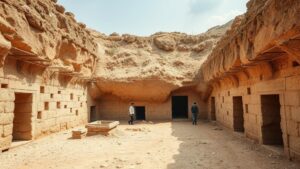Documenting the elaborate courtship displays of the great Argus pheasant.
Documenting the Elaborate Courtship Displays of the Great Argus Pheasant
The great Argus pheasant (Argusianus argus) is renowned for its intricate and fascinating courtship displays, which are a mesmerizing spectacle of avian behavior. Native to the tropical forests of Southeast Asia, this bird employs a multifaceted approach to attract mates that not only showcases its physical prowess but also serves as an evolutionary strategy for reproduction. This article delves into the specifics of their courtship rituals, highlighting behavior, habitat, and ecological significance.
Physical Characteristics that Enhance Courtship
The great Argus pheasant is distinguished by its impressive plumage, which plays a crucial role during courtship. Males typically boast elongated feathers adorned with exquisite eye spots, which can reach up to 1.5 meters in length, making them one of the most visually striking birds in the avian world. This feather display is not merely for aesthetic purposes; it is an essential element of their mating ritual.
- The eye spots can deceive predators, making the male appear larger and more formidable.
- The stunning feather patterns are an indicator of genetic fitness, as only the healthiest males can grow and maintain such extravagant plumage.
The courtship display is a crucial rite of passage during the breeding season, which typically occurs between April and August in regions like Malaysia and Indonesia. This timeframe ensures that the male’s vibrant plumage is in full display, drawing the attention of potential females.
The Courtship Ritual: A Delicate Dance
The courtship ritual of the great Argus pheasant is a complex performance that involves multiple stages. Males utilize a combination of vocalizations, dance movements, and the strategic positioning of their feathers to captivate females.
- Vocalizations: Males issue a series of low-frequency calls to establish territory and attract females. These sounds can carry over considerable distances, asserting their presence in the dense undergrowth.
- Display Area: Males typically clear a small patch of the forest floor, creating an arena where they can perform their display rituals.
- The Dance: The male displays its feathers around the female while engaging in a rhythmic dance, where movements are synchronized to the vocalizations. This combination creates a visual and auditory spectacle.
One particularly captivating aspect of the dance involves the male fanning out its tail feathers, revealing vibrant colors and eye spots. This creates an illusion of larger size and makes the male even more appealing to females. Such displays can last for hours, often culminating in the female choosing her mate based on the vigor and beauty of the performance.
Ecological and Evolutionary Significance
The elaborate courtship displays of the great Argus pheasant are not solely for reproductive success; they also have broader ecological implications. The ritual impacts local biodiversity as these behaviors can influence the genetic diversity within populations. most successful displays often lead to stronger offspring that inherit desirable traits, contributing to the overall health of the population.
Also, the great Argus pheasant is an integral part of the rainforest ecosystem. By maintaining specific territories and engaging in displays, these birds help control insect populations and contribute to the pollination of various plant species as they move through their habitats.
Conclusion: The Majesty of the Great Argus Pheasant
Documenting the courtship displays of the great Argus pheasant reveals a fascinating interplay between beauty, behavior, and ecology. Their elaborate displays are not merely for attracting mates but are essential for the health of their species and their ecosystem. As deforestation and habitat loss pose significant threats, understanding these behaviors becomes critical in conservation efforts. Protecting the habits and natural display arenas of the great Argus pheasant will not only support their survival but also preserve the rich biodiversity of their native environments.
To witness this extraordinary display in its natural habitat, conservationists and avian enthusiasts often participate in guided observation tours in regions such as Borneo and Sumatra, where these beautiful creatures flourish. Observing the courtship of the great Argus pheasant is an unforgettable experience that connects us to the wonders of natural selection and the incredible diversity of life on Earth.



